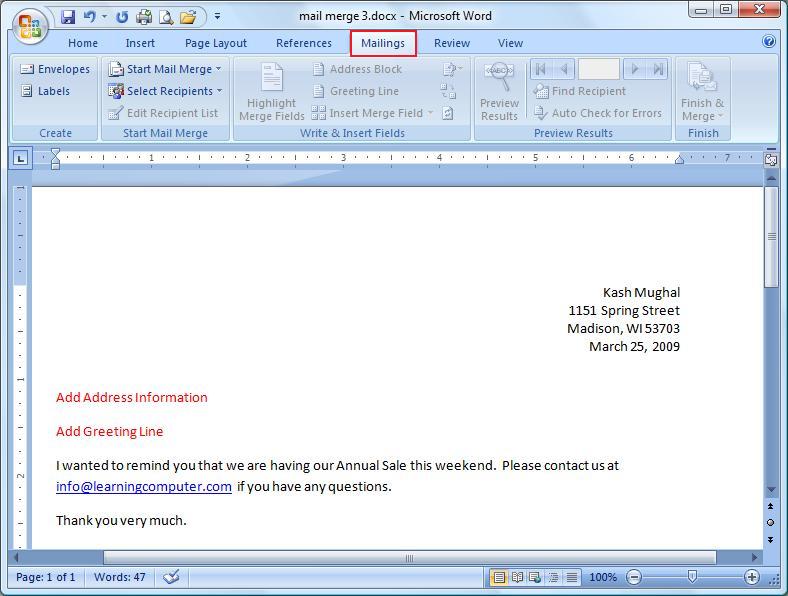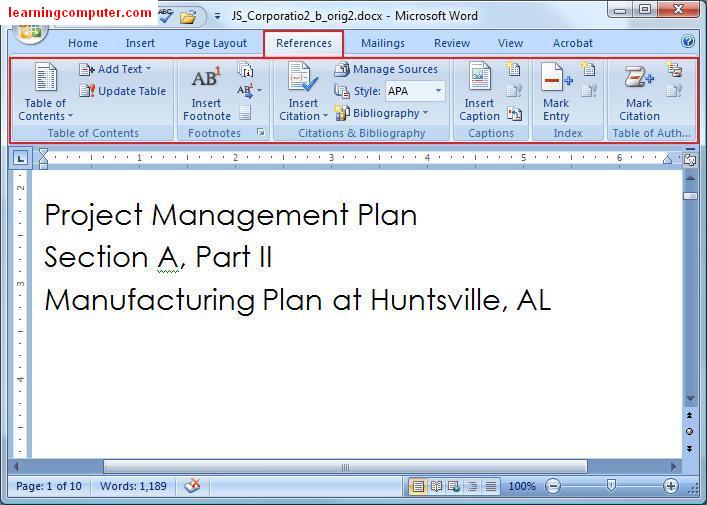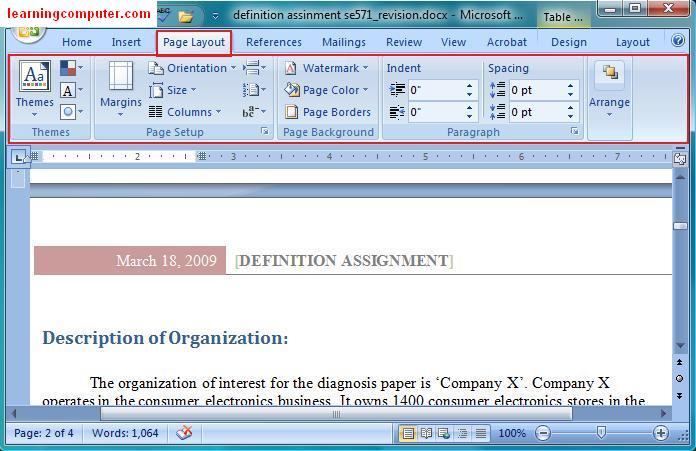
Microsoft Word 2007 - Mailing Tab Using the Mail Merge feature in Microsoft Word 2007, you can write a customized letter or flier to all your customers in one shot. Each letter has the same kind of information, yet the customer content is unique typically provided by a data source. The data source could be in many formats including text file, Microsoft Excel, Microsoft...




















